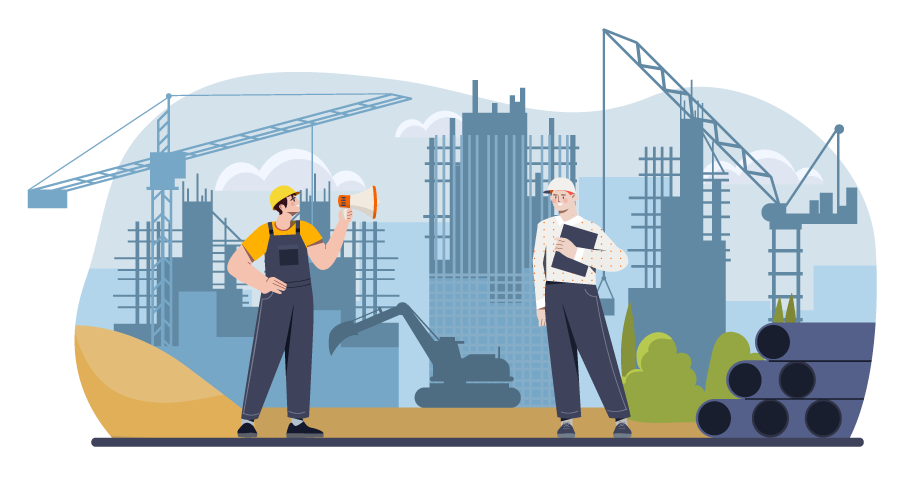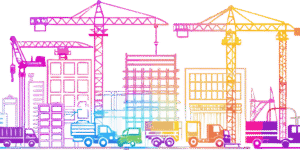In 2021 and 2022, developers broke ground on a record number of new apartment projects. Then in 2023, the construction activity came to an abrupt halt. High borrowing and construction costs paired with macroeconomic headwinds gave developers pause, with some suspending or delaying existing projects. The pause in new construction wasn’t for a lack of demand. The US remains in a severe housing crisis, short some 4.3 million apartment units to meet current demand. Still, the high costs and tight capital market have made many new projects infeasible.
While developers have grown bearish on new construction—or at least are challenged to make a deal work—there are some regions and cities where new construction activity is continuing to grow. Developers are actively building in small cities in the South and West, and experts expect these markets to see a rise in new construction starts for the next three years, even as construction slows nationwide.
Here’s a closer look at new construction activity, and the Sun Belt markets where developers are largely breaking ground:
Record Year for Apartment Deliveries
While new construction starts for apartments are slowing overall, apartment deliveries are breaking records. This year, for the first time in history, more than 500,000 apartment units will be delivered in a single year. NAIOP and RentCafe both estimate that 518,000 new apartment units will come to market this year, up 9% from 2023 and 30% from 2022. The activity will keep up through 2028, with more than 2 million apartment units set to come to market. The record-breaking activity is the result of a surge in new apartment construction starts following the pandemic, when borrowing costs had fallen to historical lows.
Despite the surge in deliveries, new construction for multifamily assets has been continuing to slow. Last year, new construction starts were down nearly 15%, and single-family starts were down 6%. This year, the National Association of Homebuilders expects multifamily construction starts will fall nearly 20% as a result of the tight lending market. The record number of new deliveries will also hamper new construction activity. Although demand continues to outpace supply, the mass of new deliveries will temporarily suppress occupancy and rents as the units are absorbed by the market.
The West and The South Lead for Projects Breaking Ground
From a regional perspective, the West and the South are currently leading the nation in new apartment completions. This year, the South will have the largest number of new apartment completions in the nation, up 40.3%, followed by the West, where apartment deliveries are up 17%. The Midwest was also a standout in new construction growth, up 10% for the year. This is not a new trend. The West and South have led apartment new construction for the last decade. These regions are in the Sunbelt or Smile Zone of the US, which has had strong population growth since the Global Financial Crisis.
This year, new construction starts are down across all regions nationally, but the South continues to have the strongest apartment pipelines, down only 5.5%, compared to 20% nationally. The West is also trending better than the nation with new construction down only 11.6% this year.
Developers Target Cities, Small and Large
It isn’t surprising to hear that developers are building new apartments in cities. This year, the New York Metro, Dallas, and Austin will account for 10% of the total new apartment deliveries in the US. New York specifically will lead new construction deliveries through 2025; however, following the sharp decline in new construction starts in the last two years, deliveries in the New York Metro area will also slow starting in 2027.
New York aside, developers are largely targeting small metros which have benefitted from population growth during the pandemic. Austin fits that profile, along with Phoenix, Charlotte, San Antonio, Nashville, and Raleigh, cities that also top the list for new apartment deliveries this year. These smaller markets are also expected to remain as strong contenders for new construction activity through 2028, thanks to population growth and corporate relocations, which have brought more jobs to the area. NAIOP uses Youngstown, Ohio, and Sherman-Denison, Texas, as examples. Youngstown apartment construction is driven by job growth in healthcare and tech sectors, while Sherman-Denison has seen growth in the semiconductor manufacturing and technology industries. This type of economic growth is driving apartment development to new markets.
Rising new construction is market-specific, and; not every small city is seeing a surge in development. Over the next five years, construction activity is projected to decline in some cities that typically lead the nation for new apartment construction, including Houston, Minneapolis-St. Paul, Dallas, Atlanta and Seattle. However, high-demand markets where development is more competitive are unlikely to wane entirely, especially as housing shortages continue and the economic situation develops
It is clear that new construction activity is falling due to cost-related challenges, not reduced demand. There are compelling demand-side fundamentals to support new construction activity, but developers are struggling to make a deal pencil. By using modern real estate development software like Northspyre, developers can streamline project management to create valuable efficiencies and enable every member of your team to drive project success. The software combines AI and automation to create accurate budgets and financial forecasts, automate tedious and time-consuming administrative tasks, and flag potential overruns before the issue gets out of hand. The results show up in the bottom line, saving developers significantly on vendor costs, and ensuring budgets and construction schedules stay on track.
With strong demand for new apartments, new technologies that can help to mitigate cost increases, and increasing development opportunities in small cities, developers can still find attractive opportunities to build new units even in a less-than-ideal construction environment.
Download our “Guide to Pro-Development Legislation” to discover the federal and state policies supporting multifamily housing production across the United States.



